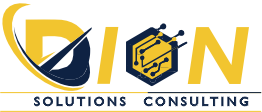Many large businesses today are rich in data and information. The big data and business analytics industry had a projected value of $215.7 billion in 2021. This figure suggests that more businesses need a high volume and variety of data through advanced analytics tools and business analysis techniques.
For business and data analysts, it’s up to them to make sense of all that data to capture the relevant ones that matter the most to these firms. Fortunately, several tools and techniques exist that can help analysts navigate through all of this information.

The right approaches and tools can help business analysts perform the appropriate evaluation to help businesses improve operations, revenue, and decision-making. This article provides a helpful guide to making better decisions that benefit your business.
What are the common methods business analysts use to evaluate organizations? How do the SWOT and PESTLE methods work? What approach works best for analyzing a firm’s mission and objectives? Are there methods that can analyze how the environment can impact a business?
This article explores the various methods business or data analysts use to evaluate enterprises and discusses how each method works as a business analysis tool.
7 Effective Methods Business Analysts Use
There are numerous business analysis tools and methods available to analysts. It’s up to these individuals to understand what methods work for what requirements an organization needs.
In particular, seven of these analysis techniques are as follows:
BRAINSTORMING
Brainstorming is a strategy for generating several ideas and picking what works best to help solve a specific problem. Alex Osborn, author of the book Applied Imagination, first coined this term in 1953.
Analysts continue using this method to address numerous issues and solve business problems.
Although techniques for conducting brainstorming sessions vary, there’s usually a general structure to follow. Once the problem or issue is presented, the team of analysts forms one or more groups to bring to the table all possible ideas that can potentially solve the problem.
After the brainstorming session ends, the team members discuss these ideas. The team considers which ideas can work and which ones should get eliminated.
The team then makes a final list of the accepted ideas and ranks them for possible use as solutions toward solving the problem at hand.
Brainstorming is a group activity technique that isn’t exclusive and can be used with other methods like SWOT and PESTLE.
THE SWOT METHOD
SWOT is a business analysis method that provides a compelling overview of a company and enables it to act on its strengths, acknowledge and address weaknesses, and capitalize on external opportunities.
SWOT stands for strengths, weaknesses, opportunities, and threats. As analysts work through this analysis process, they can evaluate an organization or team by asking the following questions:
- Strengths: What does the business do well? What are its internal resources? Does the organization have any advantages over its competition?
- Weaknesses: What are the firm’s limitations compared to the competition? What does the business or team lack?
- Opportunities: Are there any opportunities or changes outside the firm that it can potentially benefit from or utilize?
- Threats: Are suppliers increasing their prices? Is the competition planning to make a move that can adversely affect the organization’s market share?
Analysts can use the SWOT method to evaluate existing organizations to determine whether there’s a change in the firm’s external environment or internal culture and find ways to respond proactively.
Meanwhile, new businesses can benefit from a SWOT analysis by using it to plan processes that’ll compel decision-makers to look inwardly and outwardly to determine the best direction for the business.
Ideally, analysts perform a SWOT analysis with the input of multiple stakeholders relevant to the business. This stakeholder input helps cover any blind spots analysts may not see during decision-making.
Analysts can also use the SWOT analysis to generate new ideas by considering how the four factors overlap. For example, combining external opportunities with the organization’s internal strengths can produce new solutions that address both elements.
THE PESTLE ANALYSIS
The PESTLE analysis helps analysts monitor the macroenvironmental factors that can positively or negatively impact the company. This method can assist in determining strategies and timing for significant business decisions like launching new products, services, or projects.
PESTLE is an acronym where each letter represents a different environmental factor that analysts must evaluate:
- Political: What’s the political situation within the local, state, federal, or international environment? How does that situation affect the firm’s industry?
- Economic: How do the inflation rates, economic growth patterns, interest rates, foreign exchange rates, and other prevalent economic factors impact the business?
- Social: What are the current and forecasted demographic and cultural trends? Are there any changes to people’s buying patterns?
- Technological: What technological advances, especially in communications, automation, and security, will likely affect the organization’s industry or market?
- Legal: What actions must the business take to comply with the law? Are there any pending bills that can affect an industry the business should know about?
- Environmental: How does the physical environment, including changing climate trends, affect the firm’s activities? Can the business operate in a way that promotes sustainability?
The PESTLE analysis doesn’t have to be performed exclusively. For example, analysts can use this method to create or evaluate the sections of a SWOT analysis, especially the external opportunities and threats.
The macroenvironmental factors can change frequently, so analysts should often tweak the organization’s PESTLE analysis to maintain relevance.
Additionally, with six factors to deal with, some analysts find it challenging to decide which PESTLE factor to work on first. In this case, combining this analysis with other techniques like SWOT can help optimize strategic planning efforts.
THE FIVE WHYS APPROACH
Analysts who have experience or are familiar with Six Sigma techniques for process improvement can find the five whys approach as a standard analysis method.
This technique asks a series of “why” questions, contrary to the five Ws (who, what, where, when, and why) often practiced in journalism.
Business analysts can use the five whys approach to pinpoint a problem’s origin by asking why the issue occurred and following it up with another “why” question.
Suppose the client refuses to receive a shipment of computer parts. Following the five whys approach, the analysis process can go like this:
- Why? Because the parts were defective
- Why? Because the parts got damaged during shipment
- Why? Because the packaging was insufficient to protect the items inside
- Why? Because the supplier was cutting back on packaging costs
- Why? Because the supplier was testing out cost-saving methods to improve its revenue
The analyst can provide recommendations to the supplier from this series of questions. Examples include allocating an appropriate packaging budget and implementing cost-saving efforts on other operations aside from packaging.
THE MOST METHOD
The MOST analysis assists businesses in performing goal-setting at every level. Analysts use this approach to help an organization focus on its most important goals. Each letter in this acronym stands for:
- Mission: This element is the organization’s long-term purpose. The mission is the basis for all other MOST sections and business decisions.
An example of a mission statement is for a coffee shop to become the best and most preferred cafe in town.
- Objectives: The objectives are the specific targets the organization must perform to accomplish the mission. Developing objectives should follow the SMART principles: specific, measurable, achievable, realistic, and timely.
For example, the coffee shop aims to achieve a 25% sales growth within the next six months.
- Strategy: Strategies are the specific steps the business should take to achieve its objectives.
Given the coffee shop’s objectives, it can consider improving its marketing campaign to increase its visibility so more customers will visit the shop.
- Tactics: These actions are small and efficient activities to carry out the firm’s strategies without viewing the big picture.
For example, the business owner can consult a digital marketing agency to improve the coffee shop’s marketing campaign. This agency can help improve the shop’s online presence and rank high in search engine results.
Analysts can use the MOST analysis technique to break down a firm’s broad goal into actionable steps and ensure these steps align with the organization’s priorities.
THE NONFUNCTIONAL REQUIREMENT ANALYSIS
Technological changes in a business aren’t uncommon, and analysts need a method to evaluate a solution that must be replaced or built from scratch.
The nonfunctional requirement analysis defines and takes the characteristics needed for a new or modified system and deals with requirements like performance or data storage. This analysis method usually covers the following:
- Logging
- Performance
- Reliability
- Security
Analysts typically perform this method during a project’s analysis phase. The business then implements the recommendations during the design phase.
THE CATWOE APPROACH
The CATWOE approach gives a business an idea of its stakeholders’ viewpoints that can affect its goals and processes. This method helps the organization understand how specific actions impact the firm’s customers, leadership, and other stakeholders.
Analysts utilize this technique at the start of a project or process and begin by defining and asking questions to the following entities:
- Customer: Who benefits from the firm’s products and operations? How can the identified issue or proposed solution affect the customers?
- Actor: Who is directly involved in the project or process, and how will it affect them?
- Transformation: What changes will likely occur if the business implements the proposed solution or new processes?
- Worldview: How will the issue or solution impact the organization’s mission and beyond?
- Owner: Who is responsible for implementing the system, and what’s the extent of their responsibility?
- Environment: What limitations are likely to impact the solution and the success of its implementation?
Business analysts can use the answers to these questions to provide recommendations to the business and guide its strategies and solutions.
For example, if a large retail company plans to construct a new shopping mall, analysts can use the CATWOE approach to understand how the firm’s decisions can impact its directors, future customers, and the surrounding community.
Depending on an organization’s requirements, business analysts can use one or more methods mentioned in this article, provided that solutions developed through these methods meet the firm’s needs.
Reference
- Revenue from big data and business analytics worldwide from 2015 to 2022
https://www.statista.com/statistics/551501/worldwide-big-data-business-analytics-revenue/
Author: Arnold Rogers
POST CREDITS: modern analyst




